
Dioscorea villosa - Plant
(MRP Inclusive of all taxes)
- Shipping ₹79 for entire order
- Dispatch in 7 days
- Country of origin: India

(MRP Inclusive of all taxes)
 Save 29%
Save 29%
Air Purifier Money Plant with Pot The Air Purifier Money Plant, also known as Pothos or Epipremnum aureum, is a stunning indoor plant that...
View full details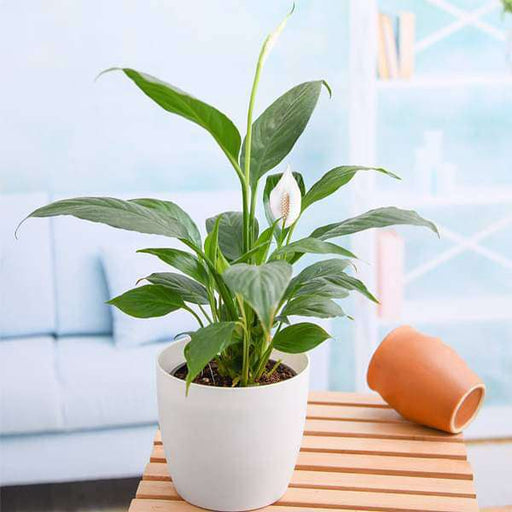
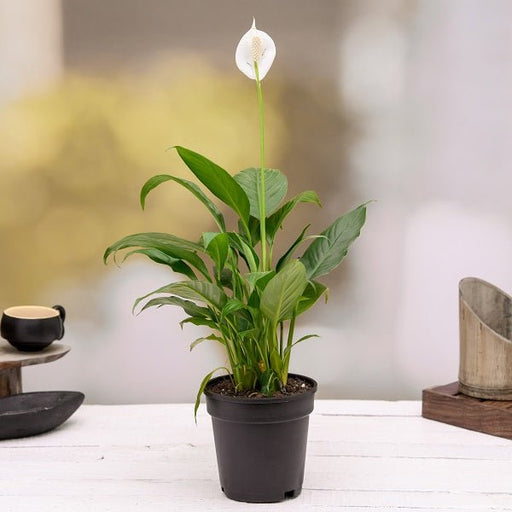 Save up to 15%
Save up to 15%
Peace Lily, Spathiphyllum - Plant The Peace Lily, scientifically known as Spathiphyllum, is a stunning houseplant celebrated for its elegant white...
View full details
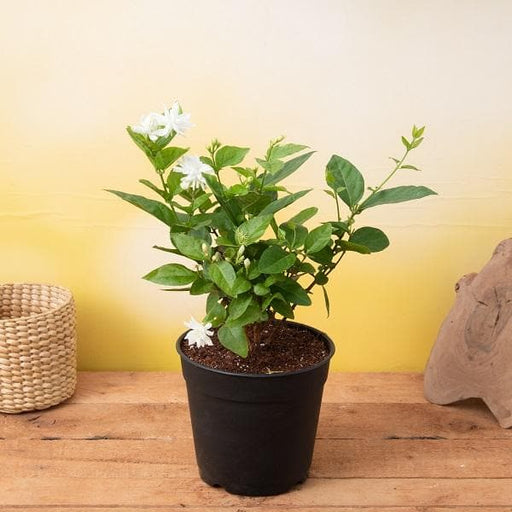 Save 25%
Save 25%
Jasminum sambac, Mogra, Arabian Jasmine - Plant Jasminum sambac, commonly known as Mogra or Arabian Jasmine, is a fragrant flowering plant...
View full details
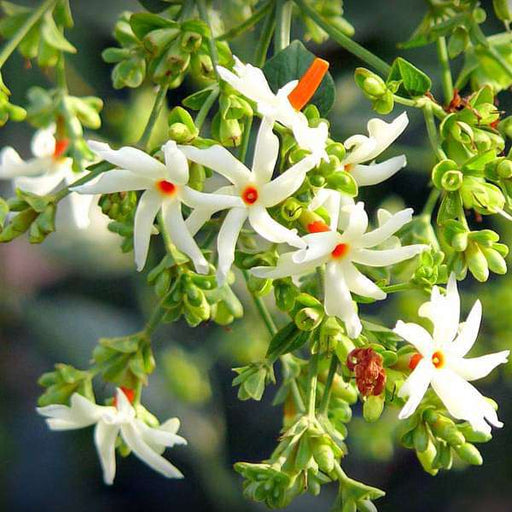 Save 18%
Save 18%
Combo Constituents Includes the Parijat Tree (Night-Flowering Jasmine), a culturally significant plant with fragrant flowers. Description The Pari...
View full details
 Save 25%
Save 25%
Miniature Rose, Button Rose (Any Color) - Plant The Miniature Rose, also known as the Button Rose, is a charming and compact flowering plant that ...
View full details Save 25%
Save 25%
Damascus Rose, Scented Rose (Any Color) - Plant The Damascus Rose, also known as Rosa damascena, is a timeless symbol of beauty and romanc...
View full details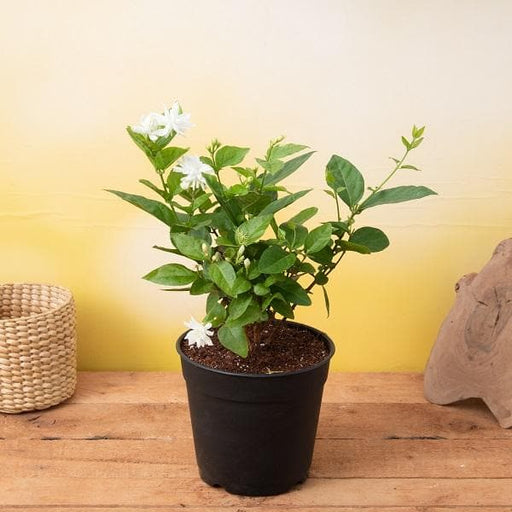
 Save 17%
Save 17%
Beautiful Fragrant Mogra, Arabian Jasmine Plant with Pot The Beautiful Fragrant Mogra, also known as Arabian Jasmine (Jasminum sambac), is...
View full details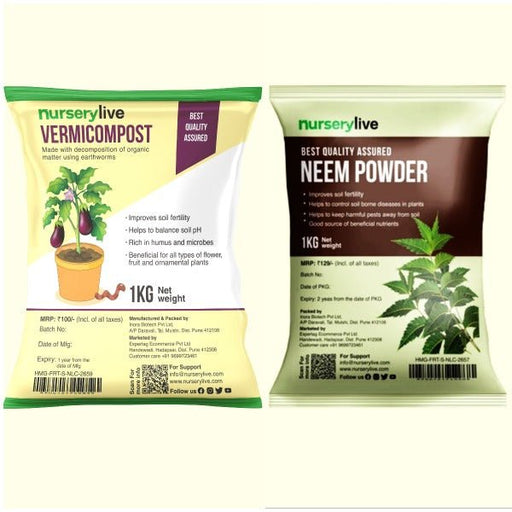 Save 15%
Save 15%
Pack of Vermicompost and Neem Cake for House Plants Transform your indoor garden with our premium Pack of Vermicompost and Neem Cake, spec...
View full details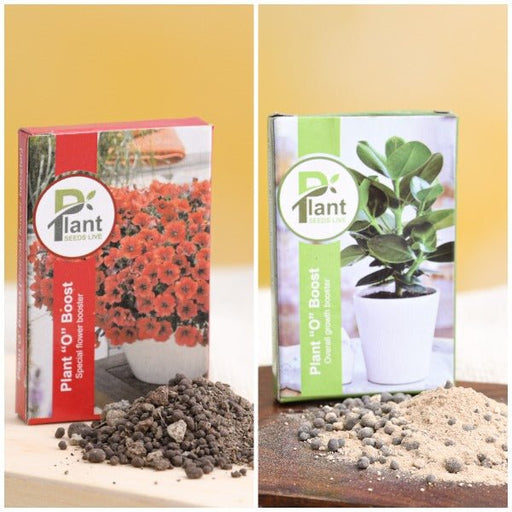
Pack of Plant Growth and Flower Boosters Unlock the full potential of your garden with our Pack of Plant Growth and Flower Boosters! This ...
View full details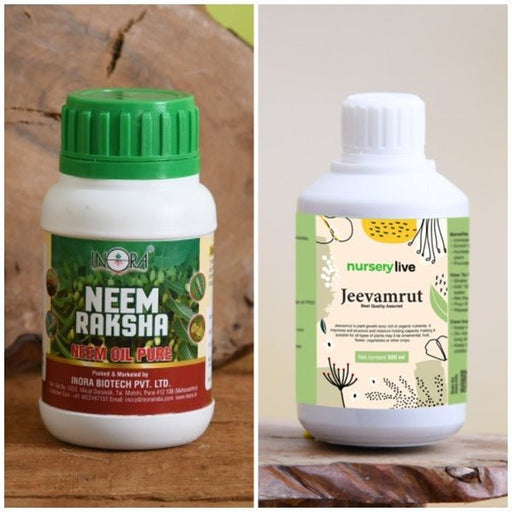 Save 38%
Save 38%
Combo of Jeevamrut and Neem Raksha for Easy Growth and Protection of Houseplants Transform your indoor garden with our exclusive combo of ...
View full details Save 22%
Save 22%
Plant Nutrients Kit (Pack of 16) for a Healthy Garden Transform your garden into a lush paradise with our Plant Nutrients Kit, featuring 1...
View full details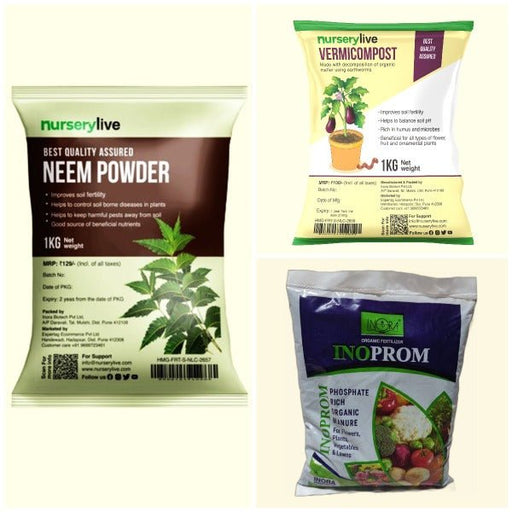 Save 16%
Save 16%
Combo of Top Plant Fertilizers Elevate your gardening game with our exclusive Combo of Top Plant Fertilizers, featuring two bags of premiu...
View full details Save 24%
Save 24%
Pack of 4 Additives to Make Soil Healthy and Nutrient Rich Transform your garden into a thriving ecosystem with our Pack of 4 Additives de...
View full details Save 30%
Save 30%
Transform your gardening experience with our premium Combo of Perlite and Vermiculite. This unique blend is designed to enhance soil aeration and ...
View full details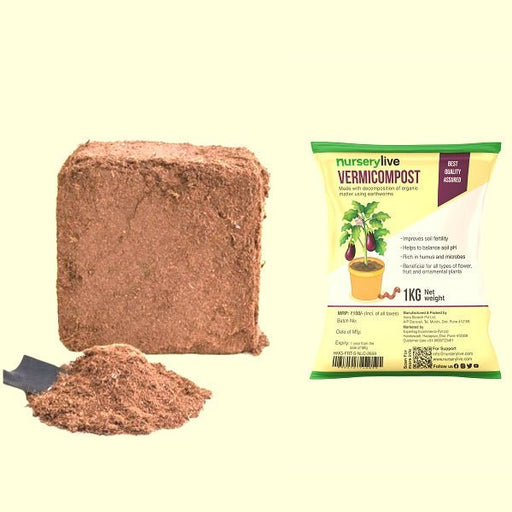 Save 27%
Save 27%
Combo of 2 Vermicompost and Cocopeat - Enrich Your Soil Naturally! Transform your garden into a thriving ecosystem with our Combo of 2 Ver...
View full details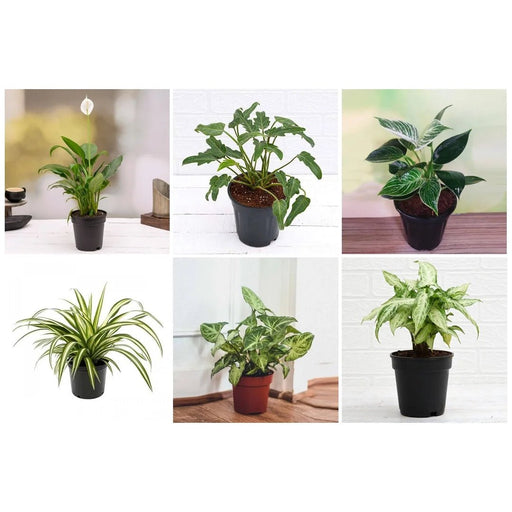
 Save 35%
Save 35%
Best 6 Plants for Perfect Indoor Garden Transform your living space into a lush oasis with our curated collection of the Best 6 Plants for a...
View full details
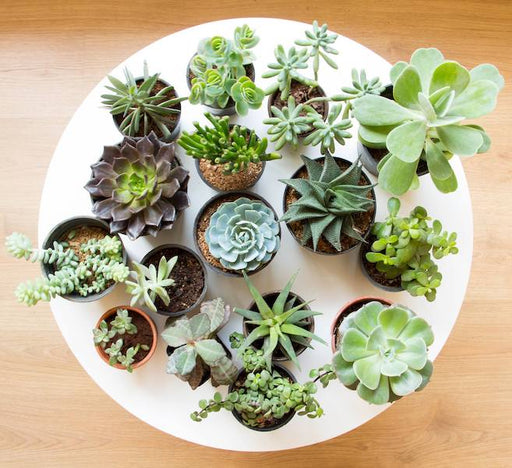 Save up to 50%
Save up to 50%
Mini Succulent Garden Pack Transform your space with our Mini Succulent Garden Pack, featuring a delightful collection of 4 any variety beautiful s...
View full details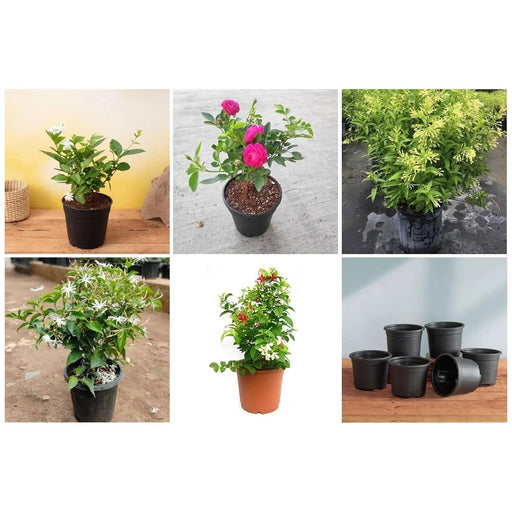
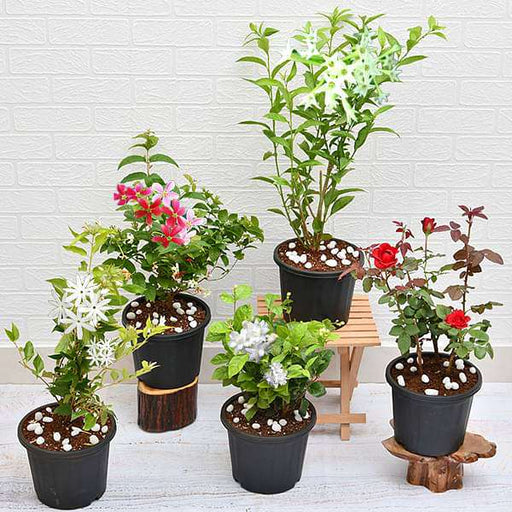 Save 30%
Save 30%
5 Best Fragrant Plants Transform your garden or indoor space into a fragrant paradise with our curated selection of the 5 Best Fragrant Plants. Th...
View full details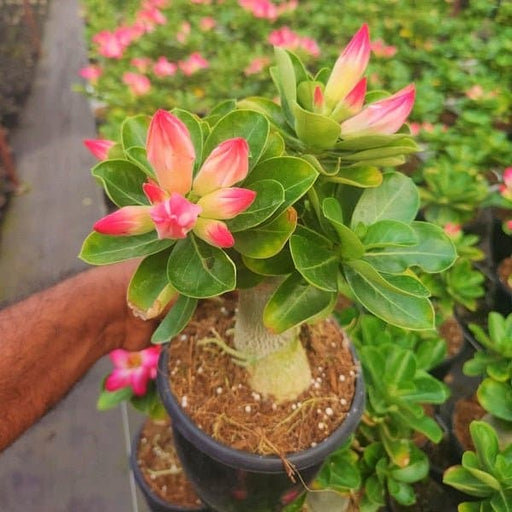
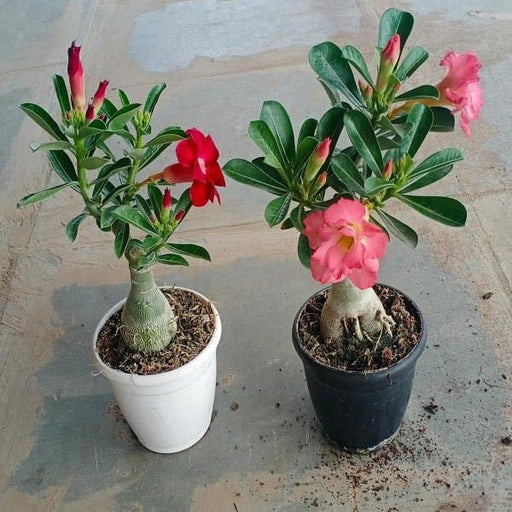 Save 24%
Save 24%
Set of 2 Bonsai Looking Grafted Adeniums Transform your indoor or outdoor space with our exquisite Set of 2 Bonsai Looking Grafted Adenium...
View full details Save 45%
Save 45%
Top 4 Die Hard Succulents Pack Transform your indoor or outdoor space with our Top 4 Die Hard Succulents Pack, featuring a curated selecti...
View full details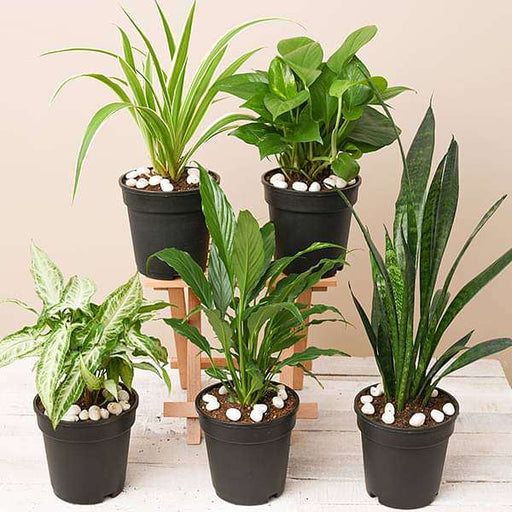
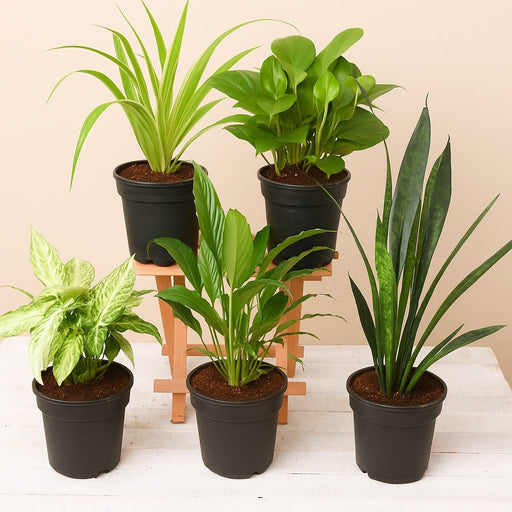 Save 30%
Save 30%
5 Best Indoor Plants Pack Transform your living space into a lush oasis with our '5 Best Indoor Plants Pack.' This carefully curated collection fe...
View full details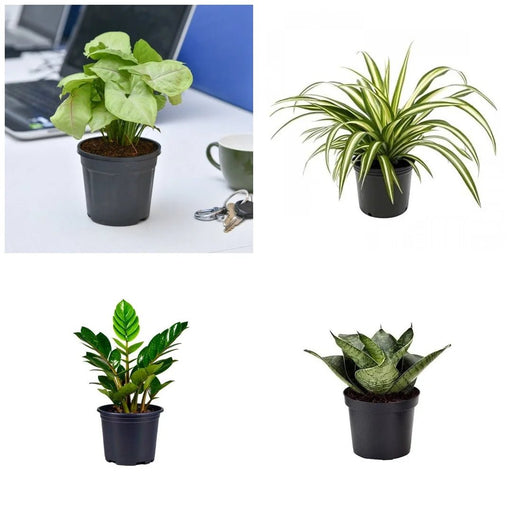
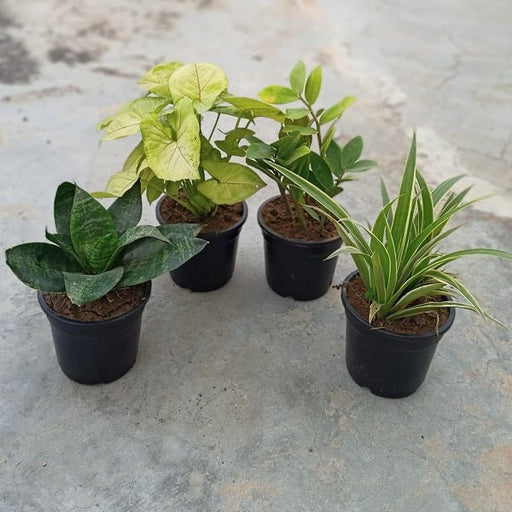 Save 25%
Save 25%
Set of 4 Evergreen Air Purifier Plant Pack Transform your indoor space into a lush, green oasis with our Set of 4 Evergreen Air Purifier Pla...
View full details| SrNo | Item Name |
|---|---|
| 1 | Dioscorea villosa - Plant |
Dioscorea villosa, commonly known as Wild Yam, is a perennial vine native to North America. This remarkable plant is celebrated for its medicinal properties and is often used in herbal remedies. With its heart-shaped leaves and twining stems, it adds a touch of elegance to any garden while providing a rich source of nutrients and bioactive compounds.
What makes Dioscorea villosa special is its historical significance in traditional medicine. Indigenous peoples have utilized this plant for centuries, recognizing its potential to support women's health and alleviate various ailments. Its tubers are rich in diosgenin, a compound that serves as a precursor for steroid hormones, making it a valuable resource in both herbal and pharmaceutical industries.
One of the standout features of Dioscorea villosa is its adaptability. This hardy plant thrives in a variety of soil types and can tolerate both shade and sun, making it an excellent choice for diverse garden settings. Additionally, its ability to improve soil health through its extensive root system contributes positively to the environment.
If you’re looking for a plant that’s not just a pretty face, Dioscorea villosa, also known as wild yam, is your go-to green companion. This botanical wonder is packed with health benefits, from hormone balance to anti-inflammatory properties. It’s like having a personal wellness coach that doesn’t judge your snack choices. Plus, it’s a natural source of diosgenin, which is often used in hormone therapy. So, if you want to impress your friends with your knowledge of herbal remedies, Dioscorea villosa is the plant to flaunt.
Cultivating Dioscorea villosa is like hosting a garden party where the guest of honor is a low-maintenance diva. This perennial vine thrives in well-drained soil and partial shade, making it the perfect addition to your garden without demanding too much attention. Just plant it, water it occasionally, and watch it grow like it’s auditioning for a role in a botanical blockbuster. With a little patience, you’ll have a flourishing plant that’s the envy of all your gardening friends.
The uses of Dioscorea villosa are as diverse as your favorite playlist. From traditional medicine to modern herbal remedies, this plant has been a staple in various cultures for centuries. It’s often used to alleviate menstrual discomfort and support reproductive health, making it a go-to for those in the know. Plus, it can be used in teas, tinctures, and even as a culinary ingredient. Who knew a plant could be so versatile? Dioscorea villosa is like the Swiss Army knife of the plant world.
Propagating Dioscorea villosa is easier than convincing your cat to sit on your lap. You can start with tubers or seeds, and with a little love and care, you’ll have new plants sprouting up in no time. Just ensure they have the right conditions—think of it as setting up a cozy apartment for your new green friends. With proper attention, you’ll be the proud parent of a Dioscorea villosa family, ready to take on the world one vine at a time.
Harvesting Dioscorea villosa is like a treasure hunt in your backyard. The tubers are the gold nuggets you’re after, and with a little digging, you’ll uncover nature’s bounty. Timing is key; wait until the leaves start to yellow, signaling that the tubers are ready for their big reveal. Just be gentle—these tubers are sensitive souls that don’t appreciate rough handling. Once harvested, you can enjoy them in various dishes or use them for their medicinal properties. It’s a win-win!
The medicinal properties of Dioscorea villosa are like a well-kept secret among herbal enthusiasts. This plant is renowned for its ability to support hormonal balance and alleviate symptoms of menopause. It’s like having a natural remedy that whispers sweet nothings to your body, helping you feel more in tune with yourself. Plus, its anti-inflammatory effects can be a game-changer for those dealing with chronic pain. Dioscorea villosa is the herbal ally you didn’t know you needed.
Dioscorea villosa has a rich history in traditional medicine, often revered as a healing powerhouse. Indigenous cultures have utilized this plant for centuries, treating everything from digestive issues to menstrual cramps. It’s like the wise elder of the plant kingdom, offering remedies that have stood the test of time. So, if you’re looking to connect with ancient wisdom while sipping your herbal tea, Dioscorea villosa is the perfect conversation starter.
When it comes to soil requirements, Dioscorea villosa is not too picky, but it does have its preferences. This plant thrives in well-drained, loamy soil that’s rich in organic matter. Think of it as a plant that enjoys a luxurious spa day—good drainage and nutrients are its pampering essentials. If you can provide a cozy home with the right soil conditions, Dioscorea villosa will reward you with lush growth and vibrant foliage. It’s a match made in gardening heaven.
Dealing with pests on Dioscorea villosa can feel like a scene from a horror movie, but fear not! This plant is relatively pest-resistant, making it a low-drama addition to your garden. However, keep an eye out for the occasional intruder, like aphids or spider mites. A little neem oil or insecticidal soap can send those pests packing faster than a bad date. With a bit of vigilance, you can keep your Dioscorea villosa thriving and pest-free.
Finding the right companion plants for Dioscorea villosa is like matchmaking for your garden. This vine loves to mingle with other plants that share its fondness for partial shade and well-drained soil. Consider pairing it with ferns or hostas for a lush, green aesthetic. Not only will they complement each other visually, but they’ll also create a harmonious ecosystem that benefits all parties involved. It’s a botanical friendship that’s sure to flourish.
Dioscorea villosa has a penchant for temperate climates, making it a diva that prefers to avoid extreme conditions. It thrives in USDA zones 5 to 9, where it can bask in the glory of mild summers and cool winters. If you live in a region with harsh winters, consider giving it a cozy blanket of mulch to keep it warm. With the right climate, Dioscorea villosa will flourish, bringing a touch of wild beauty to your garden.
Cooking with Dioscorea villosa is like inviting a celebrity chef into your kitchen. The tubers can be prepared in various ways, from roasting to mashing, adding a unique flavor to your culinary creations. You can even incorporate them into soups or stews for a hearty twist. With Dioscorea villosa, you’ll impress your dinner guests with your adventurous palate and knowledge of exotic ingredients. Who knew a plant could elevate your cooking game so effortlessly?
Dioscorea villosa, also known as wild yam, is a perennial vine native to North America. It’s famous for its tuberous roots, which have been used in traditional medicine. Think of it as nature’s little pharmacy, offering potential benefits for hormonal balance and more. Who knew a plant could be such a multitasker
Dioscorea villosa is celebrated for its potential health benefits, including hormone regulation and anti-inflammatory properties. Some say it’s like a natural mood ring, helping to balance your body’s chemistry. Just remember, while it’s a superstar in the herbal world, it’s not a substitute for professional medical advice.
Growing Dioscorea villosa is like hosting a plant party! It loves well-drained soil and partial shade. Plant the tubers in spring, water them like you’re giving them a spa day, and watch them climb. Just be prepared for a vine that’s more ambitious than your last DIY project!
You can find Dioscorea villosa at specialty nurseries, herbal shops, or online retailers. Just make sure you’re getting the real deal and not a wannabe plant. It’s like finding a rare gem in a sea of ordinary rocks—worth the hunt!
Dioscorea villosa is generally considered safe when used appropriately, but moderation is key. Think of it as a delightful treat rather than an all-you-can-eat buffet. Always consult with a healthcare professional before diving into the wild yam world, especially if you’re pregnant or nursing.
While Dioscorea villosa is often praised, it can cause side effects like digestive upset or allergic reactions in some folks. It’s like that friend who’s fun at parties but can be a bit unpredictable. Always start slow and listen to your body’s cues!
Dioscorea villosa is often touted for its potential to ease menopausal symptoms, thanks to its phytoestrogen content. It’s like having a supportive friend during a tough time. However, results can vary, so don’t forget to consult your doctor before making it your go-to remedy.
Preparing Dioscorea villosa can be as simple as making a tea or using it in herbal supplements. Just remember, it’s not a culinary superstar, so don’t expect it to shine in your next gourmet dish. Think of it more as a health booster than a dinner guest!
The best time to harvest Dioscorea villosa is in the fall when the leaves start to yellow. It’s like waiting for the perfect moment to pop the champagne—timing is everything! Just dig carefully to avoid damaging those precious tubers.
Yes, Dioscorea villosa can be grown indoors, but it requires a sunny spot and a sturdy trellis. Think of it as a plant that needs its own little apartment. Just be prepared for some vine gymnastics as it stretches toward the light!
Nope, Dioscorea villosa and Dioscorea opposita are not the same! While they share the same family, they have different properties and uses. It’s like comparing apples to oranges—both are great, but they each have their own unique flair!
Dioscorea villosa typically takes about 3 to 4 months to grow from tuber to harvest. It’s like waiting for a fine wine to age—good things come to those who wait! Just keep nurturing it, and soon you’ll be reaping the rewards of your green-thumb efforts.